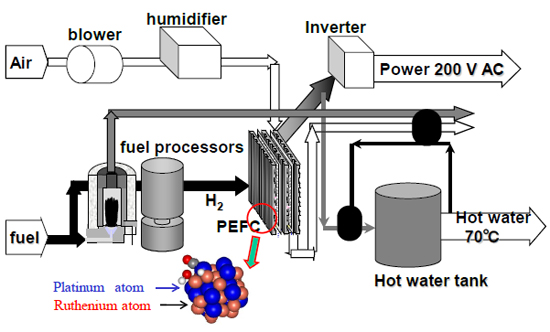First Success in Development of Novel Alloy Catalyst with Perfectly Intermixing of Atoms Contributing to Improved Efficiency of Residential-Use Fuel Cells
2012.09.13
(2012.10.09 Update)
Hokkaido University
National Institute for Materials Science (NIMS)
High Energy Accelerator Research Organization (KEK)
A research group including Hokkaido University, NIMS, etc., succeeded in developing a novel alloy catalyst in which the platinum atoms and ruthenium atoms that contribute to improved efficiency in residential-use fuel cells are perfectly intermixed.
Abstract

Figure: Residential-use solid polymer-type fuel cell system (polymer electrolyte fuel cell: PEFC), and an enlarged diagram of the developed catalyst (lower left)
